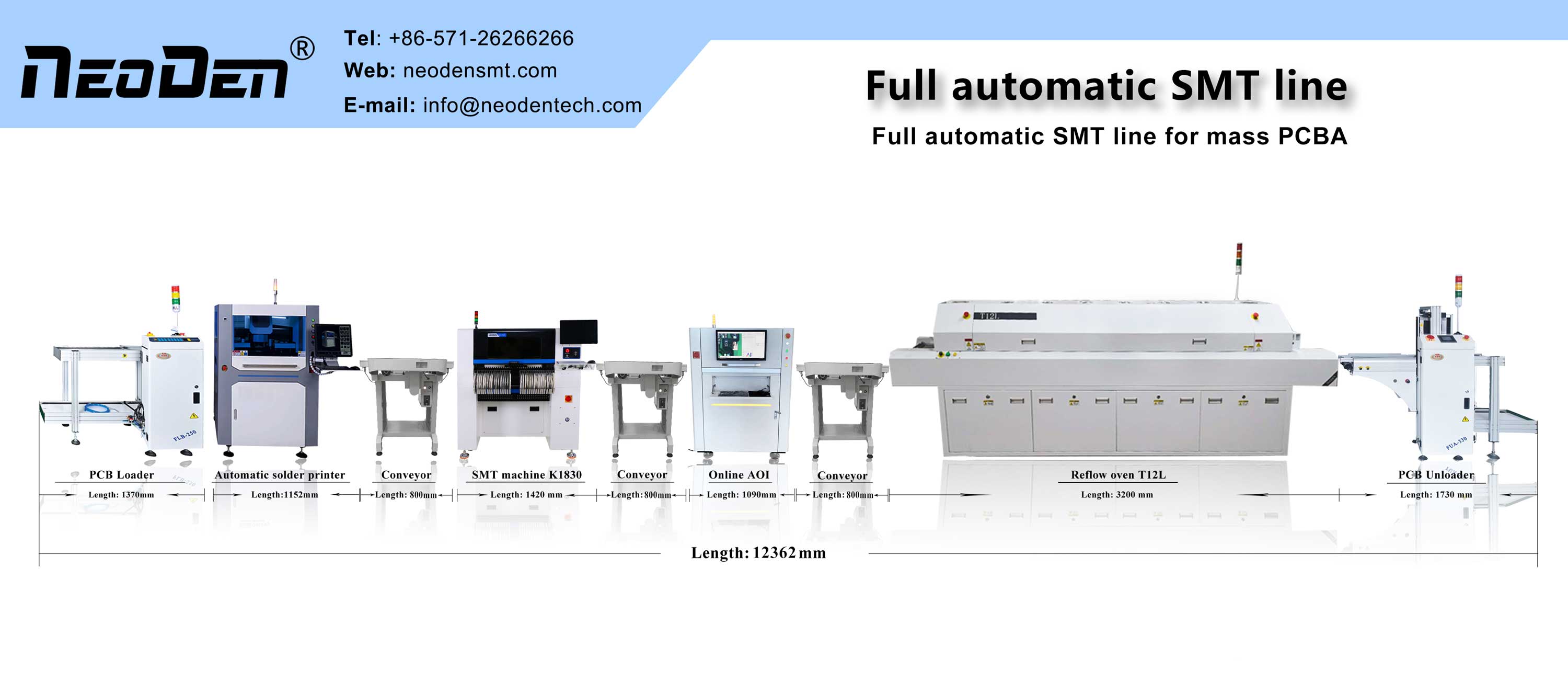I. Background description
Wave soldering machine welding is through the molten solder on the component pins for the application of solder and heating, due to the relative movement of the wave and PCB and molten solder “sticky”, wave soldering process is much more complex than reflow soldering, to be soldered package pin spacing, pin out length, pad size are required, on the PCB The layout of the board direction, spacing, as well as the installation of the hole line also has requirements, in short, the wave soldering process is poor, demanding, welding yields basically depends on the design.
II. Packaging requirements
1. suitable for wave soldering placement element should have solder end or lead end exposed; Package body from the ground clearance (Stand Off) <0.15mm; Height <4mm basic requirements. Meet these conditions of the placement components include:
0603~1206 package size range of chip resistive components.
SOP with lead center distance ≥1.0mm and height <4mm.
Chip inductors with a height ≤ 4mm.
Non-exposed coil chip inductors (i.e. C, M type)
2. suitable for wave soldering of the dense foot cartridge components for the minimum distance between adjacent pins ≥ 1.75mm package.
III. Transmission direction
Before the wave soldering surface component layout, the first should determine the PCB over the furnace transmission direction, it is the layout of the cartridge components “process benchmark”. Therefore, before the wave soldering surface components layout, the first should determine the direction of transmission.
1. In general, the long side should be the direction of transmission.
2. If the layout has a close foot cartridge connector (pitch <2.54mm), the layout direction of the connector should be the direction of transmission.
3. in the wave soldering surface, should be silk-screened or copper foil etched arrow marking the direction of transmission, in order to identify when welding.
IV. Layout direction
The layout direction of the components mainly involves chip components and multi-pin connectors.
1. the long direction of the SOP device package should be parallel to the wave soldering transmission direction layout, the long direction of the chip components, should be perpendicular to the wave soldering transmission direction.
2. multiple two-pin cartridge components, the jack center line direction should be perpendicular to the direction of transmission, in order to reduce the phenomenon of one end of the component floating.
V. Spacing requirements
For SMD components, the pad spacing refers to the interval between the maximum outreach characteristics of adjacent packages (including pads); for the cartridge components, the pad spacing refers to the interval between the solder pads.
For SMD components, the pad spacing is not entirely from the bridge connection aspects, including the blocking effect of the package body may cause leakage of solder.
1. cartridge components pad interval should generally be ≥ 1.00mm. for fine pitch cartridge connectors, allow appropriate reduction, but the minimum should not be <0.60mm.
2. cartridge component pads and wave soldering SMD component pads should be ≥ 1.25mm interval.
VI. Pad design special requirements
1. in order to reduce leakage soldering, for 0805/0603, SOT, SOP, tantalum capacitor pads, it is recommended that the design in accordance with the following requirements.
For 0805/0603 components, in accordance with the IPC-7351 recommended design (pad flare 0.2mm, width reduced by 30%).
For SOT and tantalum capacitors, the pads should be expanded outward by 0.3mm compared to the normally designed pads.
2. for metalized hole plate, the strength of the solder joint mainly relies on the hole connection, pad ring width ≥ 0.25mm can be.
3. For non-metallized hole plate (single panel), the strength of the solder joint is determined by the pad size, the general pad diameter should be ≥ 2.5 times the diameter of the hole.
4. for SOP package, should be designed at the end of the tinned pins steal tin pads, if the SOP pitch is relatively large, steal tin pad design can also become larger.
5. for multi-pin connectors, should be designed in the off-tin end of the stolen tin pads.
VII. Lead out length
1. the lead out length of the formation of the bridge has a great relationship, the smaller the pin spacing, the greater the impact of general recommendations:
If the pin pitch is between 2~2.54mm, the lead extension length should be controlled at 0.8~1.3mm
If the pin pitch <2mm, the lead extension length should be controlled at 0.5~1.0mm
2. the lead out length only in the component layout direction to meet the requirements of wave soldering conditions can play a role, otherwise the elimination of the effect of bridge connection is not obvious.
VIII. the application of solder resist ink
1. we often see some connector pad graphics position printed with ink graphics, such a design is generally considered to reduce the phenomenon of bridging. The mechanism may be the ink layer surface is relatively rough, easy to adsorb more flux, flux met with high temperature molten solder volatilization and the formation of isolation bubbles, thereby reducing the occurrence of bridging.
2. If the distance between the pin pads <1.0mm, you can design the solder resist ink layer outside the pads to reduce the probability of bridging, which mainly eliminates the dense pads between the middle of the solder joint bridging, and theft of tin pads mainly eliminate the dense pad group last desoldering end of the solder joint bridging their different functions. Therefore, for the pin spacing is relatively small dense pads, solder resist ink and theft of solder pad should be used together.
Post time: Dec-14-2021

